Share
Sophus3 has published a later article on this subject available here: The Long March: Chinese car brands in Europe
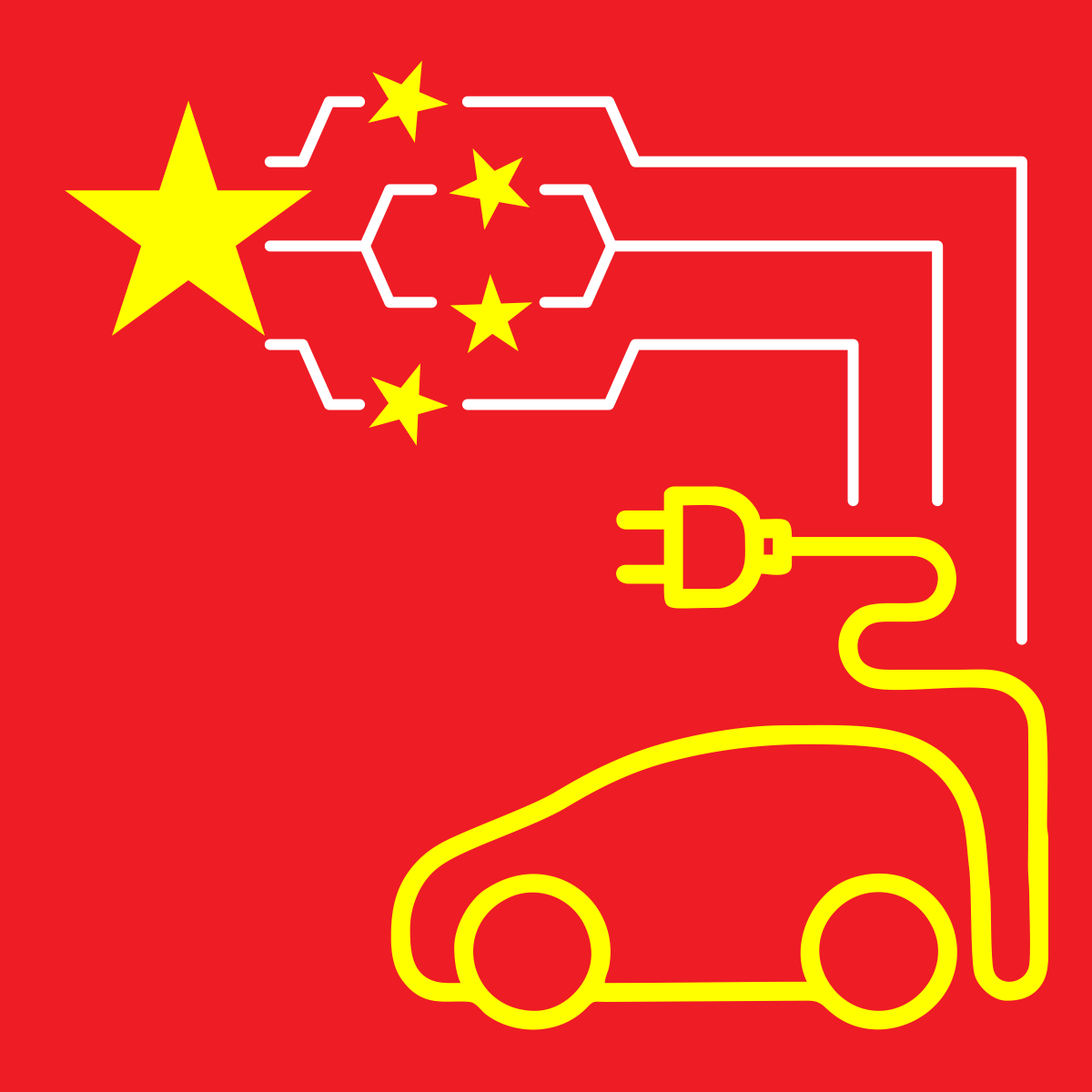
Introduction
As a company focused on delivering digital expertise within the automotive sector, Sophus3 makes every effort to track how the market is evolving and to understand change and disruption. In recent months there has been a great deal of interest in the entrance of Chinese vehicle manufacturers into the European car market.
The first driver of this interest has been the recent, rapid growth of their, admittedly still small, market share. In the first nine months of 2022, 155,000 Chinese made cars were sold in Europe — more than double the number for the whole of the previous year. Whilst this gives these brands only 1.4% of the European car market as a whole, it represents a more significant 6% of the rapidly growing and hugely important EV market.
More recently, the presence of Chinese brands at the Paris motor show in October — from which many of the major automotive incumbents were absent — has forced the European car industry to take notice. Great Wall Motors and BYD chose this event to put down confident markers of their intentions with the launch of some impressive new cars.
This briefing paper on the entrance of Chinese car makers into Europe is in two parts. Part 1 looks at the reasoning and strategy behind their entry into the market and provides a brief snapshot of which brands are involved. This information has been compiled working from Chinese manufacturers’ export data, European registration statistics and also from automotive press and company PR sources.
Part 2 looks at the new entrants’ digital channels, which provide more detailed insights into which markets these brands are present in, their current state of readiness and their digital capabilities. This is based on an audit of 14 Chinese automotive brands’ web presence in the nine markets that we identify as, currently, the most significant points of entry. This site survey was conducted by Sophus3’s research team in early November 2022.
Executive summary
- New Energy Vehicles (NEVs) are the Chinese brands’ entry point into Europe.
- Government strategy led the move into NEV production so as to allow the domestic industry to leapfrog its historic disadvantages.
- Europe is now an attractive market because of the speed of uptake of EVs there and the higher pricing EVs command.
- European government subsidy and Chinese government support further encourage these brands’ entry into the region.
- The new entrants are prioritising the safety and quality of their products which are engineered to meet European consumers’ preferences.
- The Chinese OEMs’ lower cost base and the economies of scale they enjoy give them pricing advantages they can potentially exploit in the future.
- The fleet/rental market is a key target.
- 10 Vehicle groups account for 90% of Chinese passenger car exports but not all are active within the European market.
- SAIC, through MG and Maxus, along with Geely whose brand portfolio includes Polestar and Lynk & Co, are amongst the large groups that were first into the European market.
- Dongfeng is building its presence using its DFSK and Voyah brands.
- Great Wall and BYD are the most recent sizable entrants with plans to expand rapidly.
- Changan, Chery, BAIC have currently little or no presence in the European market, but all have brands and products that could facilitate entry at some future point.
- There are a number of smaller disruptors such as Aiways, Nio and Xpeng that are establishing themselves firstly in the Nordic markets and aiming to compete with Tesla and the premium German manufacturers.
- Chinese brands remain in the early stages of their market entry and it is too early, and there are too many factors in play, to realistically assess the possible winners and losers.
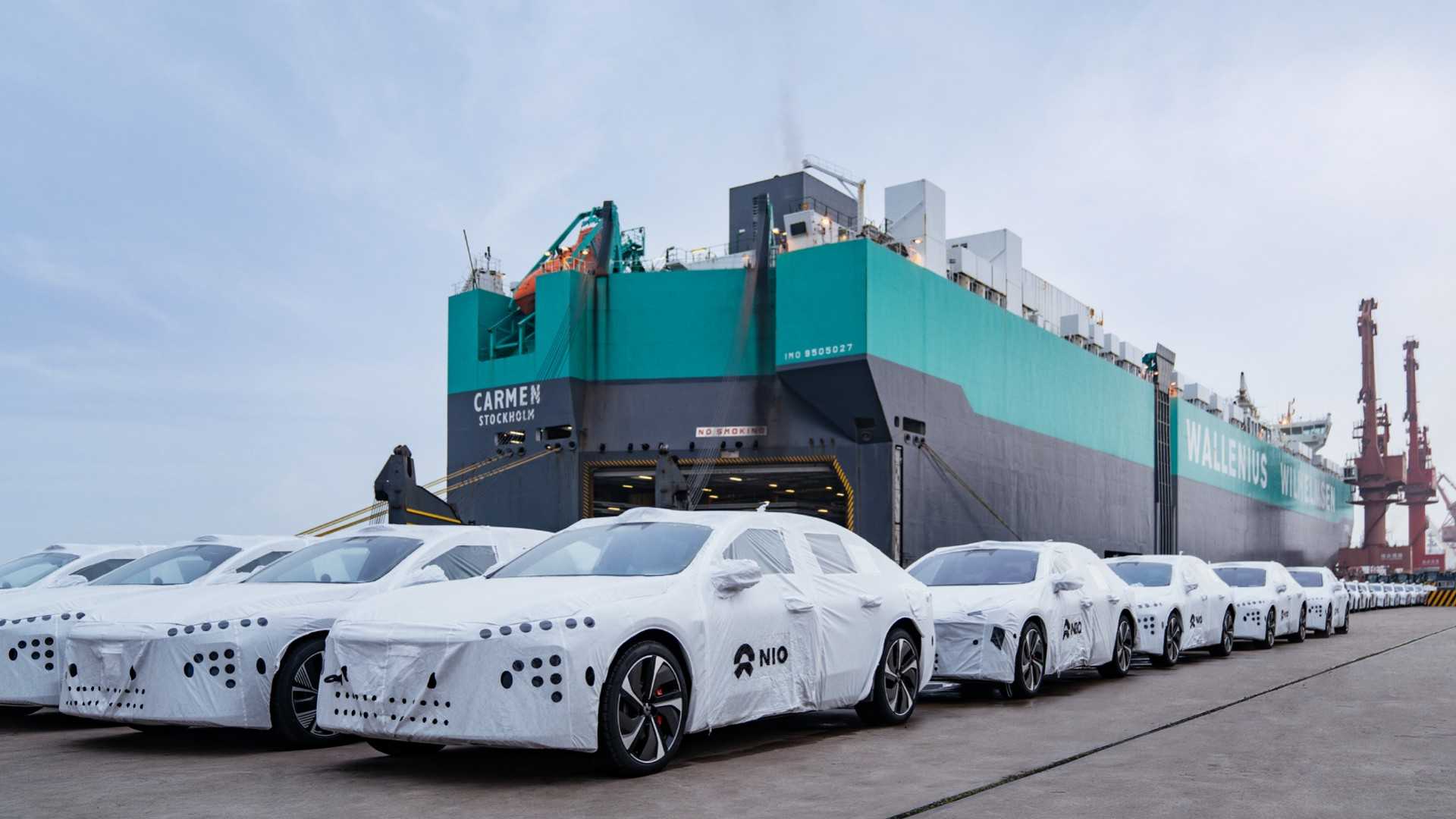
Nio ET7s ready to embark for Europe from Lianyungang in August 2022. Source Nio
China’s EV strategy
NEVs
‘New energy’ vehicles (NEVs)—a term specific to the Chinese industry and which includes not only Battery Electric Vehicles (BEVs), but also Plug-in Hybrid Vehicles (PHEVs), and Fuel Cell Electric Vehicles (FCEVs)—are the Chinese brands’ entry point into Europe.
The Chinese automotive industry barely existed until the 1950s when factories began assembling what were already arcane vehicles using designs licensed from the USSR. Most of these vehicles were heavy duty trucks and buses.
China therefore came late to the passenger car game, with neither the opportunity or capability to develop Internal Combustion Engine (ICE) technology. From the 1980s, growing demand for passenger cars was fulfilled at first by imports, mainly from Japan, and then through joint ventures with overseas manufacturers. Whilst this allowed some technology transfer into China, the industry still had no ICE based intellectual property it could exploit, or the access to the global supply chains that underpinned the success of Japanese, Korean, European and North American automotive manufactures.
Leapfrog
That situation began to change from 2009 when the government announced a strategic shift to turn the country’s automotive industry into a globally relevant powerhouse, utilising the development of NEVs as a means to leapfrog the country’s technological disadvantages in the existing ICE car market.
In less than a decade the effectiveness of the Government’s strategy became obvious. By 2018 1 million NEVs were being produced annually.
The most recent data shows that in the last quarter (Q3 2022), over 1.5 million BEVs were sold in China, representing an increase of 94% over 2021, and accounting for three quarters of global sales during that period.
Whilst a near Stalinist model of economic planning was the midwife of this rapid growth, the market has now taken over. Estimates vary, but there are thought to be over 300 companies manufacturing and selling electric vehicles in China. The government is progressively withdrawing domestic subsidies and stimuli to EV adoption as it is clear the market for electric vehicles is now self-sustaining.
Target Europe
This rapid growth of that market, and its saturation by manufacturers, explains the Chinese automotive industry’s interest in Europe. Whilst Europe is a smaller market in terms of total volume, in terms of EV share, and growth of that share, it now outpaces China. In the Nordic Countries, Germany, The Netherlands and the UK more EVs are sold per head of population than in the People’s Republic.
Europe is also a richer market, with GDP per head more than three times higher than in China. Whilst the average price of an EV in Europe has risen 14% since 2015, the average price in China has fallen 52%: the opportunity for Chinese brands is clear.
European government subsidies lend further assistance to EV sales with 21 of the 27 countries that make up the EU offering financial inducements to EV buyers. European governments have provided further backdoor support to growing the electric vehicle market through intervention and assistance in the provision of the necessary charging infrastructure. Europe installed 300,000 additional public charging points during 2021, a 30% increase over the previous year.
Support
Whilst the Chinese government has scaled back its intervention in the home market, it has promised its fullest support to ensure the successful entry of Chinese companies into the European car market:
“The Ministry of Commerce will continue to work with relevant departments to support new energy vehicle companies to speed up the construction of overseas marketing and after-sales service networks, and increase brand promotion efforts. Encourage qualified overseas institutions of Chinese-funded banks to provide overseas consumer financial products. Research to expand export transportation channels and transport new energy vehicles through China-Europe trains.” Ministry of Commerce 06.09.2022
Chinese automotive brand strategy
Covid-19 delayed the plans for entry into Europe of many of the manufacturers covered later in this paper. That momentum is now being regained and we are witnessing an array of brand and product launches from Chinese OEMs.
Safety first
The first attempts by Chinese brands to enter the European market during the noughties floundered badly on quality and safety issues. In 2005 the Landwind SUV earned a zero-star rating from the safety testing body Euro NCAP; in 2007 Brilliance’s BS6 sedan received just one star.
Chinese brands have now prioritised safety issues as they bid for European market share. Recently Ora’s Funky Cat and Wey’s Coffee 01 both received a full five-star rating from Euro NCAP. To achieve these scores requires the fitment of a range of sophisticated active safety features.
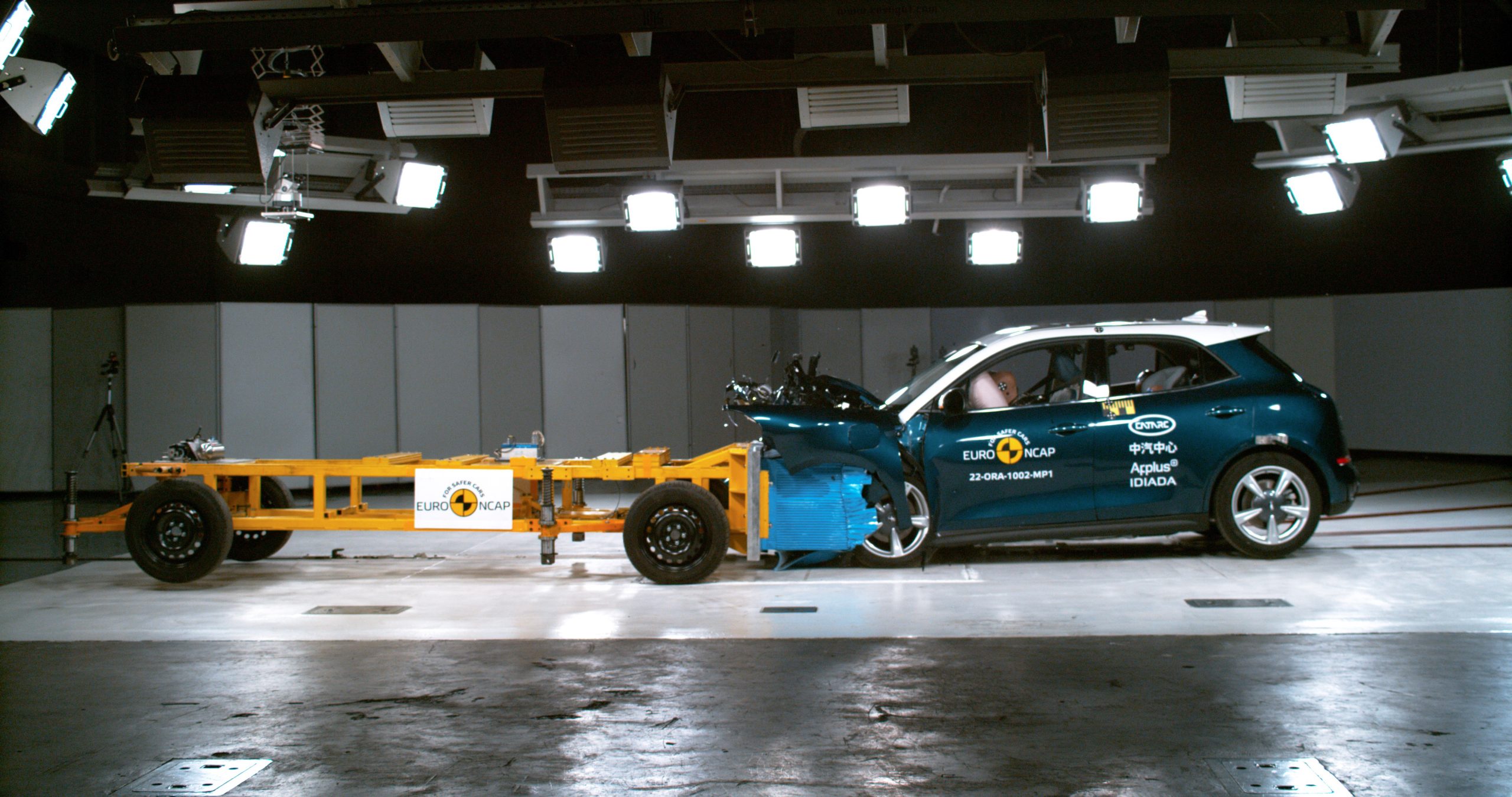
The Ora Funky Cat recently gained a 5-star safety rating. Source Euro NCAP
Chinese brands appear to have consciously learned from the Japanese and Korean automotive brands’ experience of initially slow European market penetration due to a mismatch between their products and European consumers’ preferences. From the beginning the new entrants have aimed to deliver products that meet European taste. Most of the Chinese manufacturers with serious intent therefore opened European R&D centres some years ago to prepare their products and brand strategy. European auto industry veterans have been headhunted for senior roles and it is noticeable that in the case of some of the larger groups—such as Geely—that their leadership teams are given a great deal of autonomy to determine European strategy.
Premium products
Looking at recent launches it is clearly wrong to think of Chinese automotive products as cheap and cheerful, ‘budget’ propositions. If anything, the focus in the latter part of the year has been on the introduction of premium products, many of them hoping to emulate the success of Tesla Model 3 and looking to take share from the German brands which currently dominate the executive segments. BYD, Nio, Aiways, and Xpeng are offering sleek and impressive saloons and SUVs very different from the products that dominate the Chinese car market. The strategy here is to aim high and establish perceptions of quality and value before attacking the mass market.
Pricing power
However, whichever segments the Chinese OEMs are active in, they will always have the potential to offer attractive pricing—which is possible due to their lower labour costs and the economies of scale they have achieved in their home market.
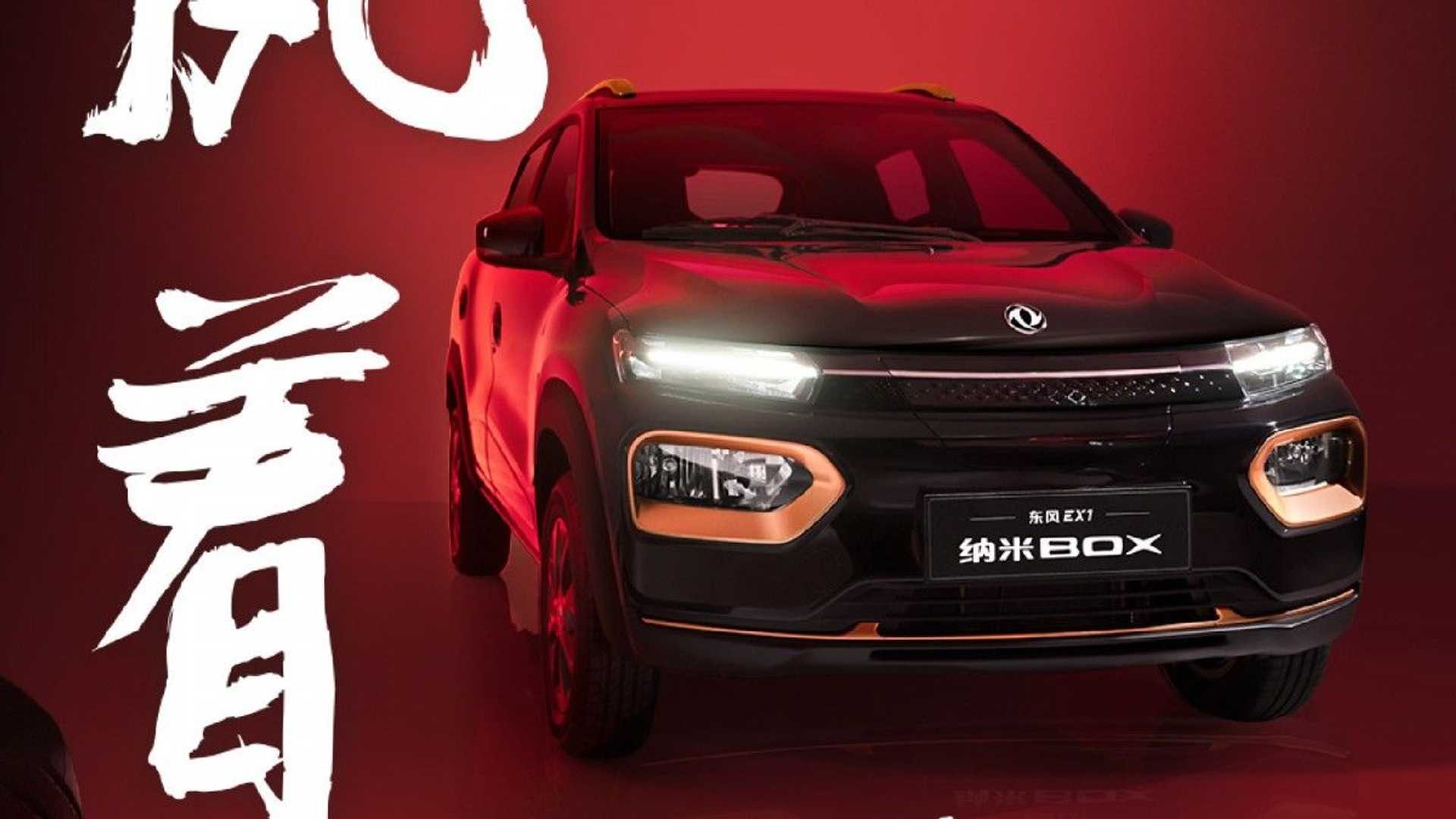
Dongfeng’s Nano Box sells as the Dacia Spring in Europe—at twice the price.
The margin available to the Chinese brands that sell their cars in Europe is evidenced when we compare the pricing of a Chinese model and its rebadged ‘European’ sibling. The Dongfeng Nano Box is a small SUV that was launched in China during the summer where it retails for the equivalent of US$9,700–10,600. In Europe the same vehicle is reskinned by Renault Group and sold under the Dacia brand as the Spring. In France, the price of the car is in a range from €20,800–22,100 (US$21,620–23,000)—nearly double the price in China.
The margin available to Chinese brands will most likely see them exert severe pricing pressure on the incumbents. Such a development has already been recorded in the Israeli market where Chinese brands have quickly gained share since launch. Geely’s Geometry C became the top selling car there during August and other OEMs have been forced to respond with price cuts to remain competitive.
The likely shape of the European market as we enter 2023, with most countries’ economies going into recession and interest rate increases subduing the new car market, will make pricing more critical within vehicle purchase decisions and can only assist the Chinese OEMs in the short term.
Measured approach
What else can be deduced about the Chinese automotive sector’s strategy from their actions so far? We are seeing a very measured approach with brands generally launching in one of the Nordic countries before progressing with caution into other markets. As yet the brands are not looking to achieve share at any cost. For example, Nio CEO and founder William Li said in a recent interview that the focus was less on sales targets and at this stage, “the company is interested primarily in customer satisfaction”.
It is also clear that a strong focus for these new entrants is going to be the fleet and rental market. In October, car rental company Sixt reached an agreement to buy 100,000 EVs from BYD. For European rental companies such an arrangement allows them to meet emissions and sustainability goals at a time when European OEMs are struggling with supply chain issues and ask a higher price for their vehicles. For the Chinese brands supplying EVs to these companies it enables them to gain significant sales volume and, perhaps as importantly, get exposure for their vehicles to a wider audience: the rental company’s hire fleet acting as the manufacturer’s demonstrator fleet.
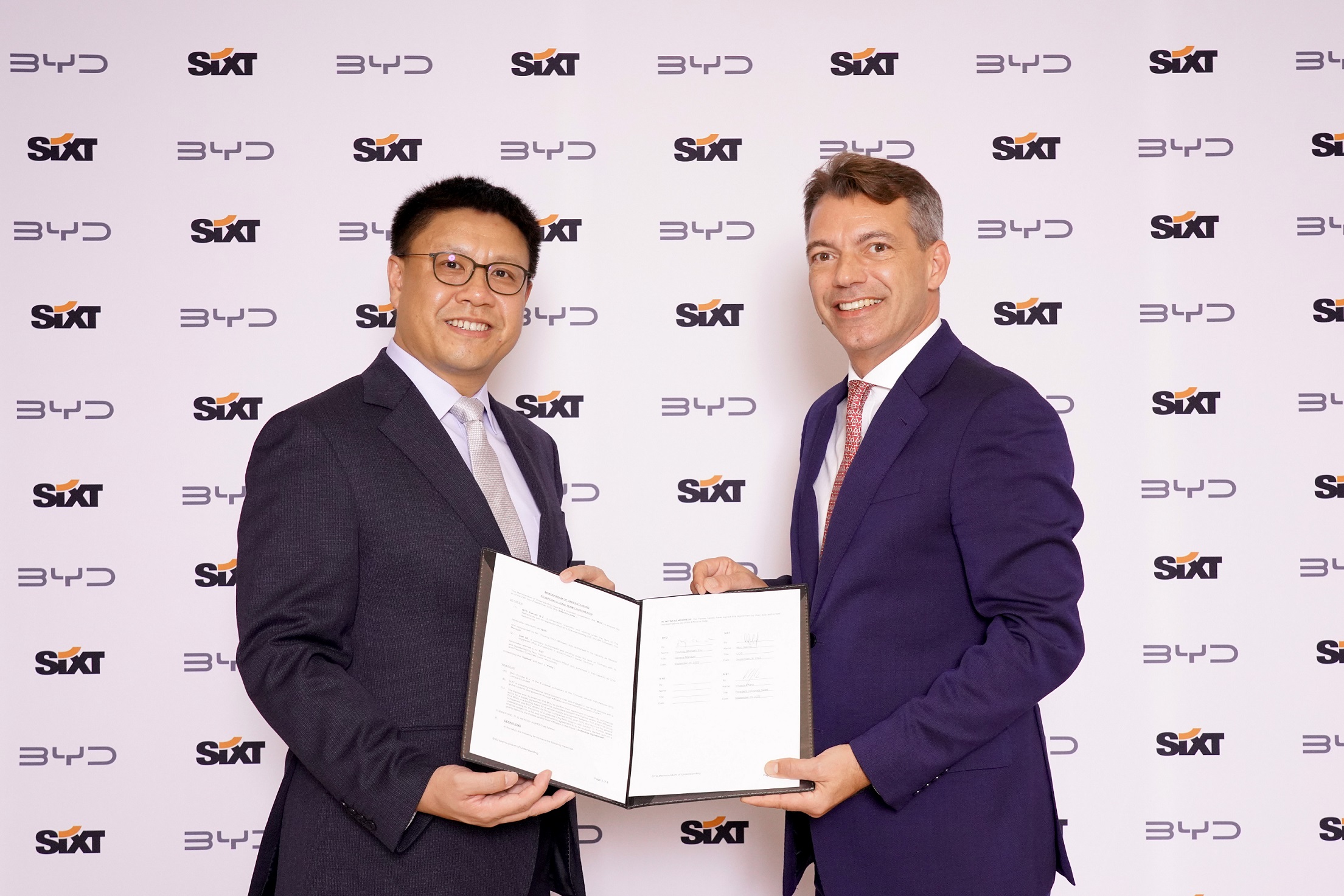
BYD & SIXT signed a co-operation agreement in October 2022.
The Top 10 Chinese export auto brands and their sub-brands
The following list of Chinese brands is based on data from the China Association of Automobile Manufacturers. The groups are ordered according to their global export ranking. These ten manufacturers accounted for over 90% of vehicle exports by volume at the start of 2022, however, not all of them are currently marketing into Europe.
SAIC
SAIC Motor is China’s largest vehicle manufacturer and is state owned. It exported 381,000 vehicles in the first six months of 2022, an increase of 48%. Exports to Europe were up 200%. SAIC has a number of other brands, including Roewe and Feifan that currently do not sell into Europe. They also have joint ventures with other OEMs including Volkswagen, Ford and General Motors. In Europe SAIC currently sells through the MG and Maxus brands.
MG
SAIC’s passenger car brand, MG, is most significant in the UK where it historically originated. Year-to-date in September it had sold 38,000 units of every power train, a 67% increase over the previous year and putting it ahead of Tesla. France, Sweden, Germany, Norway, Denmark, are the other large markets for MG.
Maxus
SAIC’s light commercial vehicle brand was created through the acquisition of the LDV group. Again, Britain is its most significant market where its EV models have won fleet business from, amongst others, DPD and f DX Group which provides delivery support to IKEA.
Changan
Changan is the fourth largest as well as oldest Chinese automotive manufacturer, yet despite building over 2 million vehicles a year, currently we detect no European marketing activity by the group. In its home market it sells under three passenger car brands: Changan, Shenlan (EVs), and Oshan. LCVs are sold under the Kaicene brand.
In 2021 the group also launched the Avatr brand and debuted a premium SUV model, the AVATR 11. Battery manufacturer CATL and telecommunications giant Huwaei are minority shareholders in this project. It is therefore possible that Avatr would make an effective launch pad for European market entry at some point in the future.
The group does have two European design centres, one since 2006 in Turin, the other opened more recently in Birmingham. The Changan marque also has a European website but, as yet, with no direction to either digital or bricks-and-mortar sales channels.
UK car magazine Auto Express carried an article in 2017 which suggested the group’s European market entry would be no sooner than 2025.
Chery
Established in 2007, Chery was for a time the largest Chinese exporter of passenger cars, but with a focus on South America, South Eastern Asia and Africa. Currently the Chery brand has a European presence in Turkey and Ukraine. In 2017 the Exeed sub-brand was introduced at the IAA Frankfurt with the TX SUV model suggested as its entrance into the European market. However, that effort appeared to stall.
Since then Chery has opened a design and development centre in Frankfurt and recently announced a US$14.2bn investment in electrification over the next five years. A new iCar ECO sub-brand has also appeared launching with a BEV city car.
Dongfeng
Dongfeng is the third largest of the state-owned Chinese ‘Big Four’ automotive manufacturers. It operates a number of brands although currently only two of these, DFSK and Voyah, appear to be active in Europe.
In September 2021 the company set an export target to Europe of 100,000 new energy vehicles during 2022 and, at the same time, said it aimed to achieve 100% electrification across its entire passenger vehicle range during 2024.
Dongfeng manufactures the Dacia Spring, an entry-level priced EV, under a joint venture with Renault. The same car is sold in China as the Dongfeng EV Nano Box.
DFSK
Dongfeng Sokon Automobile manufactures small vans and utility vehicles “targeted at the business and municipal sectors”, a growing number of which have electric drivetrains. The brand’s website lists operations in: Cyprus, Slovakia, Czech Republic, Hungary, Germany, Italy, Croatia, North Macedonia, The Netherlands, Spain, Switzerland, and the UK.
Voyah
Voyah has been conceived as a specialist and premium EV brand. In February the company announced it would be launching its first product into Europe, the Free SUV, starting in Norway. A first showroom was opened in Oslo during June. Deliveries of pre-ordered vehicles are due to start in Q4 2022.
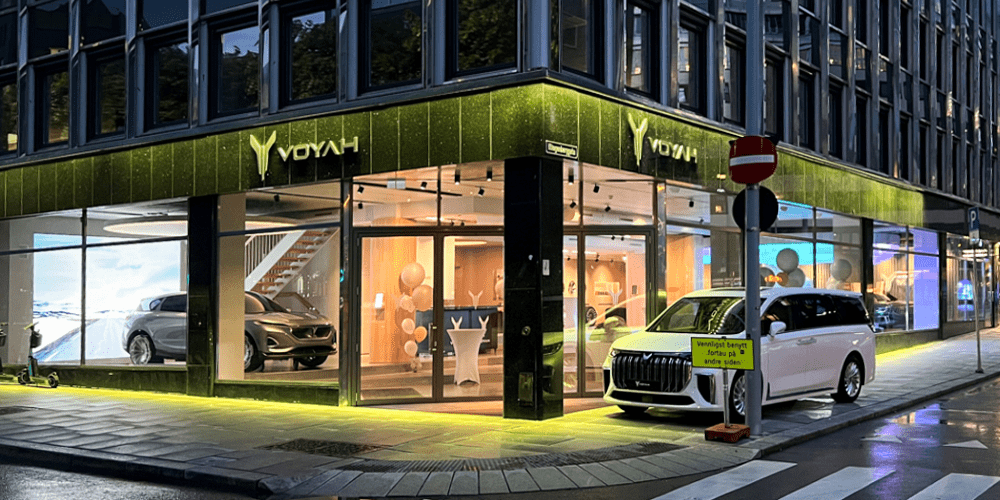
Voyah’s Oslo Showroom. Source: Voyah
Geely
China’s first privately owned OEM, Geely was founded in 1997 by Eric Li. Acquisition and expansion means it now controls a rich mix of brands including Geely Auto, Volvo (acquired from Ford in 2010), Lynk & Co, Proton, Lotus, and Geometry (a pure EV brand). Geely is seen as one of the most sophisticated and capable recent entrants into Europe as it experiments with both new technologies and innovative business models.
The Group operates R&D centres in Hangzhou, Ningbo, Gothenburg, Coventry and Frankfurt (Raunheim), as well as two global design studios, one in Shanghai and one, again, in Gothenburg.
Lynk & Co
Whilst Lynk & Co retails vehicles in some markets, its model in Europe is predominantly subscription based. Subscription services provide the user flexible access to a car without the long-term commitment of a traditional lease. Lynk and Co states that it now has 60,000 users of its services, primarily in Sweden, the Netherlands, Italy, Germany and Belgium.
Geometry
Whilst the brand concentrates on the Chinese market it has also shipped cars to Belarus and found high levels of success in Israel. Registration data also shows their cars appearing in Norway so a wider expansion may be underway.
Lotus
Lotus was majority acquired in 2017 and investment is transforming it further from an ‘enthusiast’ marque into a maker of high-end EV products, both hypercars and SUVs.
London Electric Vehicle Company
LEVC builds the ‘iconic’ London Cab in Coventry, UK. Geely is investing in the CaoCao ride hailing service in Paris that uses LEVC’s TX vehicles, exploiting their novelty value.
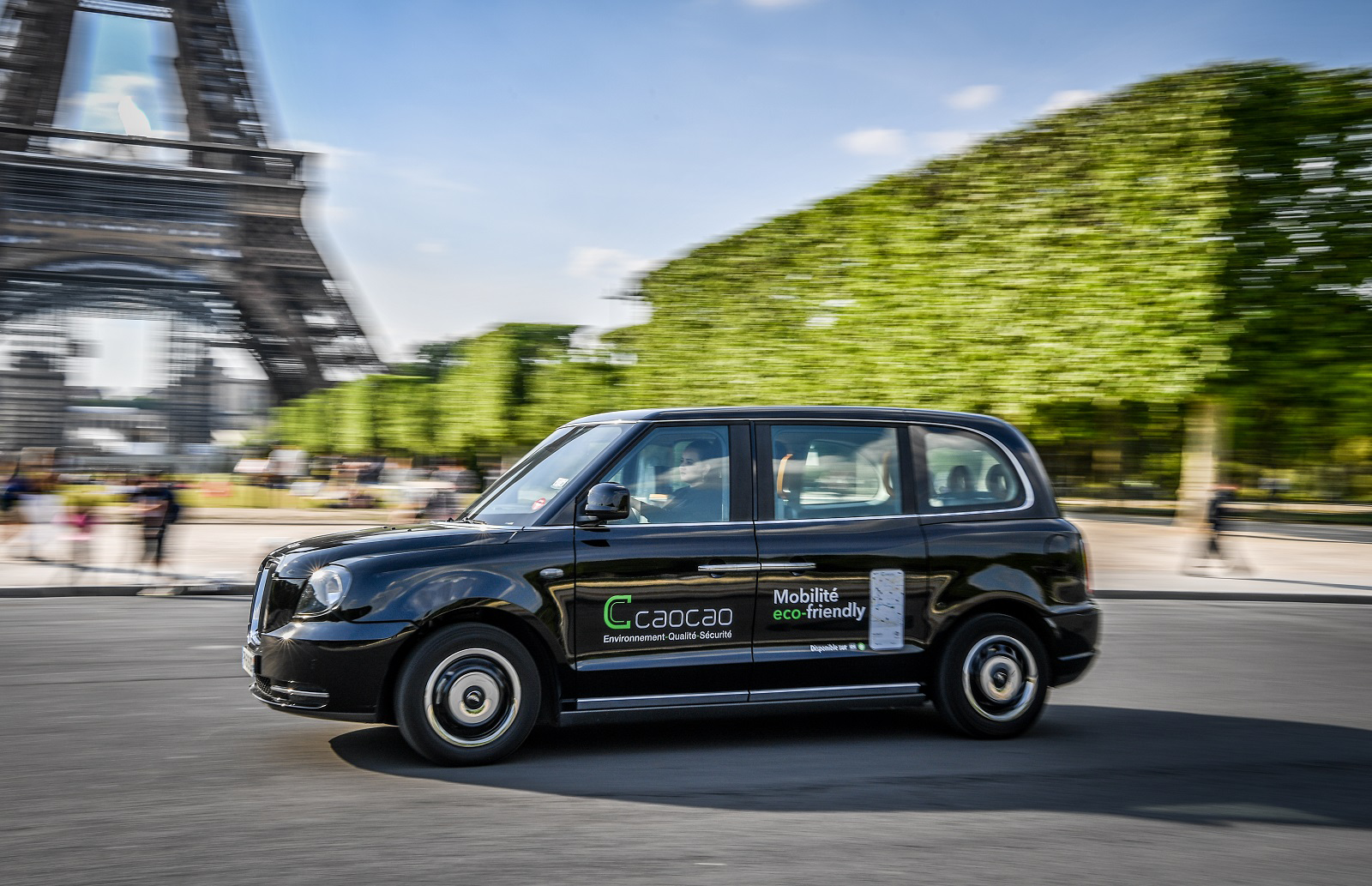
The CAOCAO ride hailing service in Paris uses a fleet of LEVC vehicles. Source: @GeelyGroup
Smart
Smart is now a joint venture with Mercedes-Benz who design the cars which Geely engineers and builds. This takes the brand close to its original conception—developed by Swiss watchmaker Swatch—as a manufacturer of electric city cars.
Polestar
Owned by Geely subsidiary Volvo, and headquartered in Torslanda, Sweden, its premium EV cars are manufactured in China where output was adversely affected over the last two years by the impacts of Covid. However, global sales were up 100% over the first three quarters of 2022 and the brand is confident of reaching its target of 50,000 sales over the whole year.
Zeekr
Zeekr is another recent ‘startup’—launched in 2021—targeting the premium end of the electric vehicle market. It will introduce its first model, the 001, into Europe in 2023. Zeekr positions itself as an ‘intelligent mobility company’ and is partnering with Waymo to develop a driverless ride-hailing vehicle for the US market. The company is planning an IPO through either the Hong Kong or a US exchange. European staff are headquartered in Gothenburg. In January 2023 Zeekr announced that it planned to double sales over the course of the year.
In October 2022 Geely acquired a 7.6% share in British luxury carmaker Aston Martin.
Great Wall Motor Group
Established in 1984, Great Wall built its initial offerings around SUVs and pickup trucks with which it enjoyed some early success in export markets. Since 2021 Australia has been its largest market outside of China. GWM was relatively late to New Energy models and has launched new brands to explore this and additional segments it previously had little presence in.
The Group opened its European HQ in Munich in November 2021 and will progressively open ‘brand experience centres’ in major European cities with the objective of creating a ‘lifestyle ecosystem’ for its customers.
GWM Pickup
The Great Wall badge is now used exclusively for the sale of pickup trucks. There are assembly plants for knock down vehicles in Russian and Bulgaria, with distribution to other countries in the former eastern bloc.
HAVAL
Haval is the group’s ‘professional SUV’ brand which became semi-autonomous in 2013. Currently it has a European presence in Belarus, Bulgaria, Moldova, Russia, and Ukraine.
WEY
Wey is the Luxury SUV brand of Great Wall Motor. (Wey is an anglicisation of Wei Jianjun the billionaire founder of GWM.) At the 2022 Mondial de l’Automobile in Paris Wey launched the Coffee 01 —a luxury plug-in hybrid—and showed the smaller Coffee 02 that will launch in 2023. “As the vanguard of Great Wall Motors’ overseas strategy, Wey will start first in Germany and then go to other parts of Europe.” In partnership with the Emil Frey group—Europe’s largest dealer group by revenue—it aims to have 60 sales and service centres operational in this first market by the end of Q1 2023.
ORA
GWM describes ORA as its “innovative and fashionable ‘Pure Electric Brand’”. At the recent Paris show it launched the Funky Cat—a retro styled five door hatch with Germany and the UK selected as the first European markets into which it will be introduced.
BAIC
BAIC is a traditional manufacturer owned by the Beijing Municipal government. From 1958 it made clones of the Soviet GAZ-2 car. In 2009 it purchased the rights to build models on Saab’s 9-3 and 9-5 platforms which went into production in 2013.
ArcFox
BAIC’s premium brand was previously touted to enter the European market after showing the ECF SUV and a supercar GT model at the 2019 Geneva show. The ECF is the work of the former head of Volkswagen design, Walter de Silva, through his association with the German engineering firm EDAG. Currently though, there is no evidence of ArcFox having ‘feet-on-the-ground’ in Europe.
Changhe
(Full name: Jiangxi Changhe Automobile Co Ltd). For a time Italian importer Martin Motors rebadged the Changhe Landy as the Martin Motors Coolcar and the Changhe Ideal as the Martin Ideal 1000 (both were ICE cars). However, the importer filed for bankruptcy in 2015 and Changhe products are no longer available in Europe.
Other BAIC group brands with no visible presence in Europe are: Beijing, Beijing Off-road Vehicles, BAW, Foton (who build buses and trucks but have an R&D facility in Germany), and Ruili.
Sinotruk
Sinotruk produces heavy trucks for the domestic market and for countries of the former Soviet Union, Southern Asia and the Middle east. Within Europe the company appears to have just a small presence in the Irish Republic. MAN holds a 25% share in Sinotruk.
BYD
An acronym for “Build Your Dreams”, the company moved into the Top Ten list of Chinese automotive exporters in September 2022.
It began European sales of the Tang large SUV and the Hang saloon in Norway in September 2021. (Both of these vehicles are available with hybrid/ICE powertrains in other non-European markets.) This was followed by the launch of the Atto3 small crossover. The company states that it will be active in Germany, Sweden, Denmark, the Netherlands, Belgium, France and the UK by the end of 2022.
At the October Mondial de l’Automobile BYD premiered its Seal model, a four door sedan that competes directly with the Tesla Model 3, but could potentially be much cheaper (in China the car sells for the equivalent of €30k).
In January 2023 the company announced the launch of two flagship models—the Yangwang U8 sport utility vehicle and the U9 sports car—showing clearly that it intends to compete with the likes of BMW and Mercedes in the premium/luxury market.
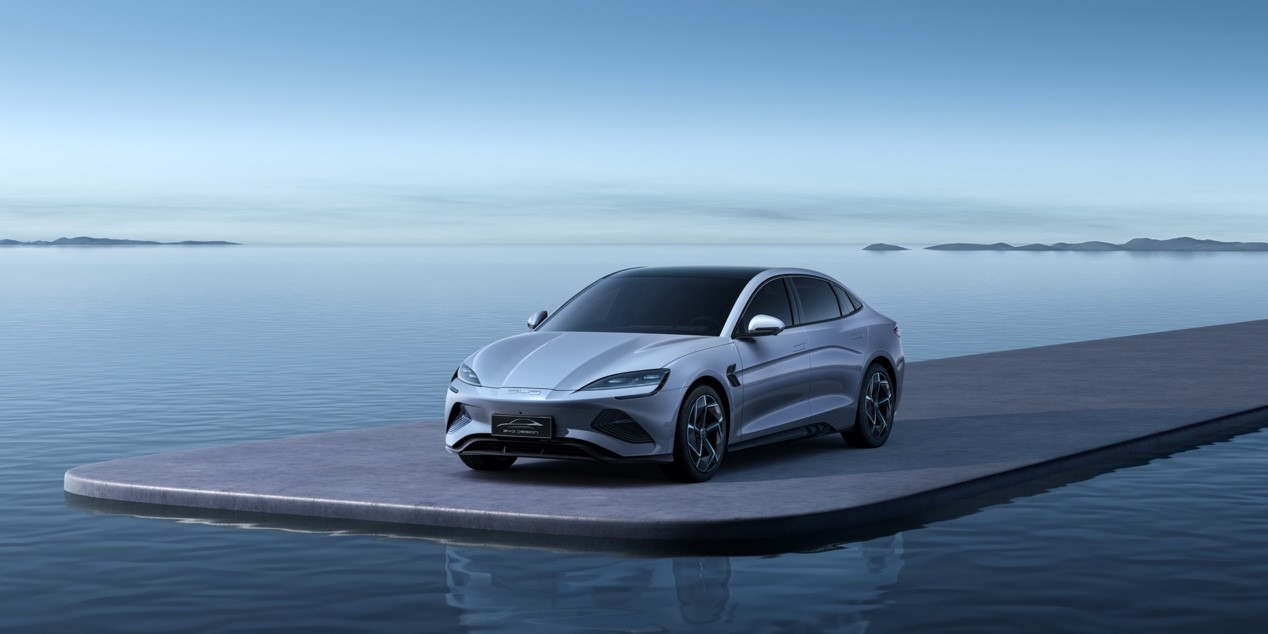
The BYD Seal which was shown at the Paris Motor Show in October 2022. Source: BYD
Other Chinese brands targeting Europe
Aiways
A manufacturer of electric cars founded in 2017, it currently has two models—the U5 and U6—that are sold in Germany through Euronics Deutschland, a chain of independent electrical retailers. The brand’s European HQ and its R&D centre are in Munich. Aiways has expanded to sell in a number of other European countries, but somewhat perversely, not yet in Norway.
The company ships from China to Europe via the rail network allowing 16 day delivery rather than 42 days via ocean transporters which others, including Tesla, use.
Hongqi
‘China’s Rolls Royce’ is part of the FAW group. The E-HS9 electric SUV, overseen by former Rolls designer Giles Taylor, is sold in Norway through HBI Norge AS and its Motor Forum network; it is offered by Stern in the Netherlands. (Hongqi translates as ‘Red flag’)
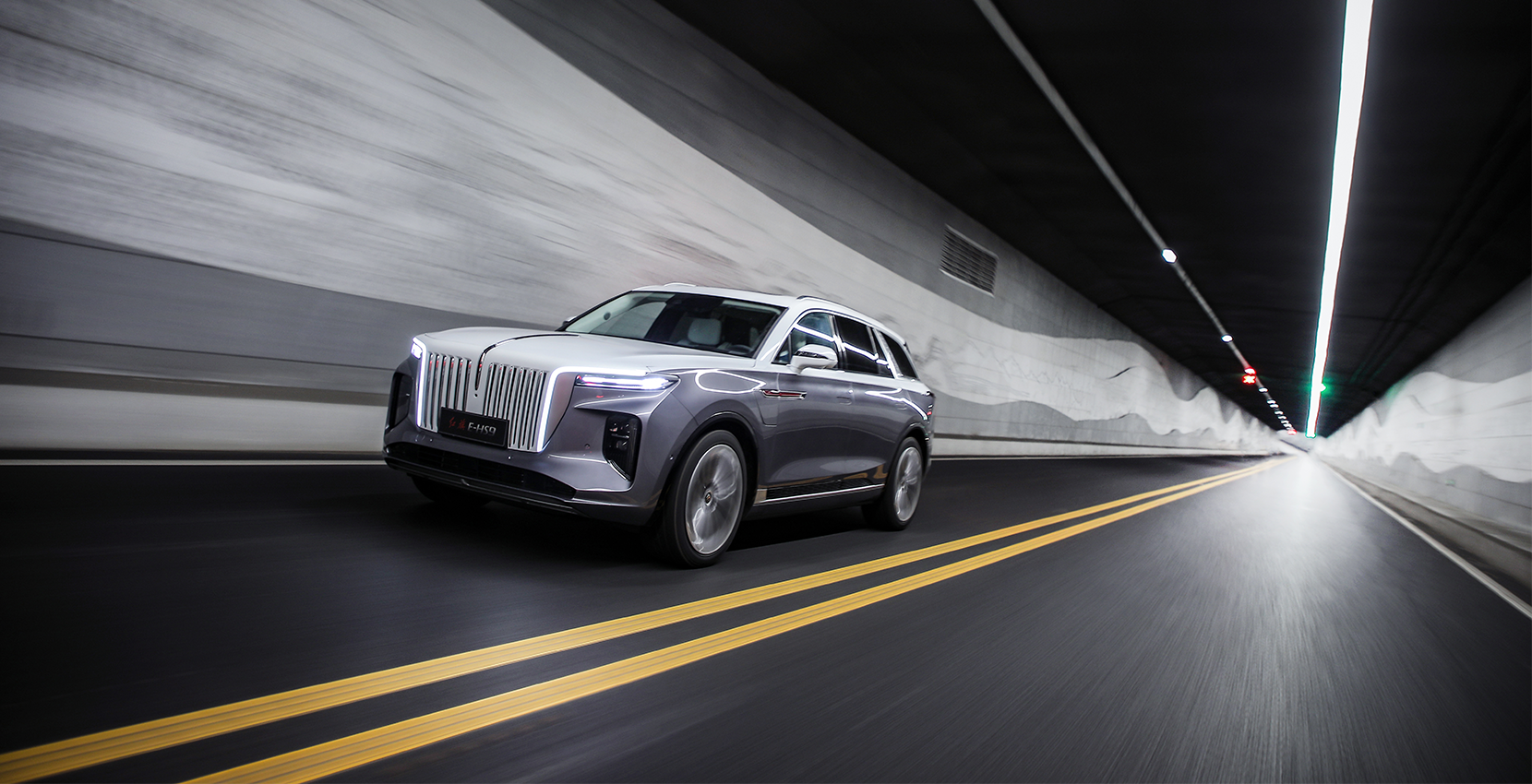
Hongqi’s luxury E-HS9 model is currently available in Norway and the Netherlands. Source: hongqi-auto.com
Human Horizons—HiPhi
This Shanghai startup manufactures EVs under the HiPhi brand which are on sale in China. The car was reviewed by autocar in the UK, but currently there is no definite plan to enter Europe.
JAC Motors
Has been an active exporter of knock-down kits of ICE cars for three decades, mainly to South America and the Philippines. In Europe their cars are distributed by Auto Kunz AG in Switzerland and are also available in Austria (although the link appears to be inactive: e-jac.at). In Italy the cars are rebadged as DR where they enjoy credible sales, and are now also available in Spain under the same brand name.
Jiangling Group Electric Vehicle (JMEV)
JMEV manufactures the Limo, a large four door saloon EV, through a joint venture with Renault. The vehicle is intended for use by private hire drivers within Renault Group’s Mobilize mobility brand to offer ride hailing services.
By the middle of 2022 JMEV had delivered 100 units of the Limo to Mobilize.

JMEV’s Limo – built specifically for ride hailing applications. Source: mobilize
Nio
Founded in 2014 as a manufacturer of exclusively electric cars, the company is also focused on digital and autonomous services. Nio’s first model to launch in Europe is the flagship SUV ES8, which rivals products from premium brands such as Audi and Mercedes-Benz. The car was launched in Norway in October 2022. “Norway is the starting point in our journey in Europe and beyond.” Nio uses battery swap technology which provides an interesting counter to consumer ‘range anxiety’ but is also challenging in that it requires a dedicated build out of swap stations in the markets it operates in.
Nio’s approach to entering the European market has been assessed as ‘localised, surgical, thoughtful’, and capable of competing with the German Big Three and even supplanting Tesla in premium if not volume segments.
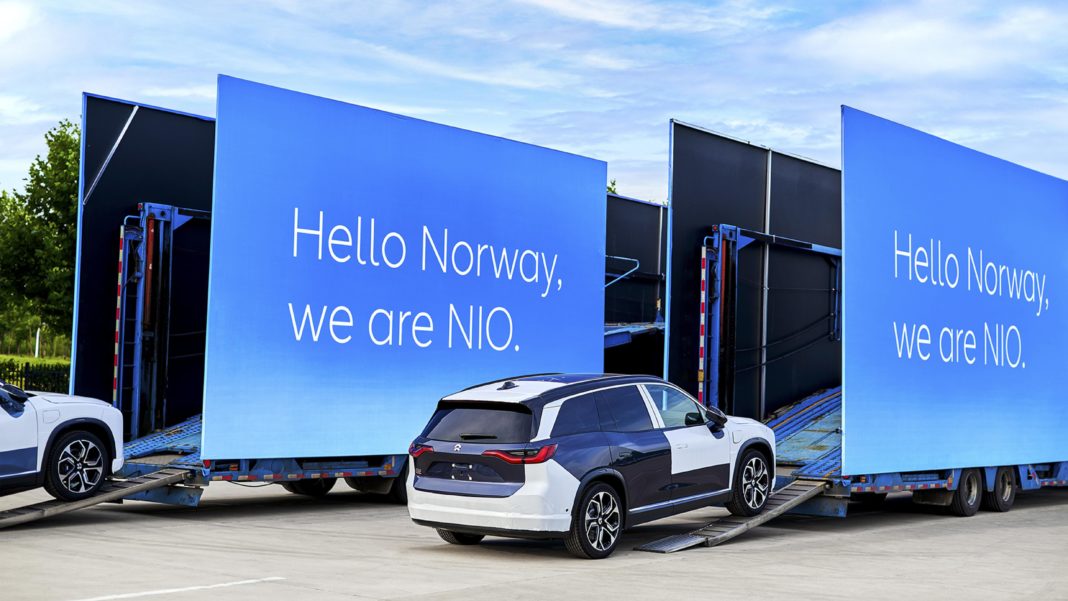
Nio unveils its electric flagship SUV ES8 in Norway. Delivery to customers began September 2021. Source: nio.com
Xpeng
Another startup, from 2014, with a focus on electric cars and autonomous technology. Headquartered in Guangzhou, the company is listed on the NYSE and has offices in California, so its initial focus was on its home market and North America. In 2020 it announced entry into Norway, with, firstly, the G3 model followed by the P7 electric coupe in August 2022. The brand opened pre-orders for the P5 model in March 2022 for Denmark, Norway, Sweden and the Netherlands, but then temporarily suspended this in June 2022 due to supply chain delays.
Xpeng recently demonstrated a full-size prototype of a VTOL flying electric car.
The company is well funded with significant investment from Alibaba, the world’s largest e-commerce retailer.
Conclusions
Chinese automotive brands are motivated to enter the European car market because of the saturation of their home market, the advantages they have from early entry into the EV space, and their considerably lower cost base. But they are at the starting point of their journey and it would be foolish to make any assessment of each individual brand’s prospects at this point in time.
What could go wrong for the Chinese brands? The answer, in the current climate, is ‘lots’. The economic headwinds in Europe, with recession certain, make winning market share an uphill task. European vehicle sales remain stuck considerably below their 2019, pre-Covid, levels.
The vehicle finance model that enabled and sustained those previously high sales—utilising PCPs and PCHs and predicated on historically atypical interest rates—looks for the moment to be broken.
The Chinese economy too faces many problems. (It seems compulsory for analysts to insert the phrase ‘Ponzi-like property market’ into any discussion of the root cause of its condition ). Problems at home, of course, give a reason for Chinese brands to increase their focus on Europe, and whilst the large and established OEMs can probably negotiate the upheaval of a major domestic downturn, younger startups still burning through capital may struggle to survive.
But the most immediate threat to these brands establishing themselves in the European market is the possibility of protectionist action by European regional or national governments.
European manufacturers, particularly in the volume segments, are nervous of the potential for Chinese manufacturers to undercut them. Stellantis CEO, Carlos Tavares, has been the most vocal in calling for tariffs to be placed on Chinese imports to effectively exclude them from the market.
In the US the Biden administration has implemented blatantly protectionist measures to favour home manufacturers as they struggle to catch up in the transition to electric power. The Inflation Reduction Act gives EV buyers a $7,500 tax credit provided the vehicle and battery materials were assembled in North America.
The US Government has a wider strategic agenda to limit the growth of China’s economic and political power and it is putting pressure on its European allies to support this endeavour. It would therefore not be surprising to see the US and Europe siding together in an attempt to limit the opportunities available to Chinese car makers.
Sophus3 will continue to monitor the situation and update and share its analysis with you.
Part 2 of this paper, which looks at the Chinese car brands digital presence in Europe is available here.
If you have any comments or questions about this paper, then please email us at contact@sophus3.com.
Follow Sophus3 on linked in to receive the latest updates: https://www.linkedin.com/company/sophus3/

